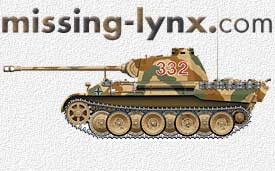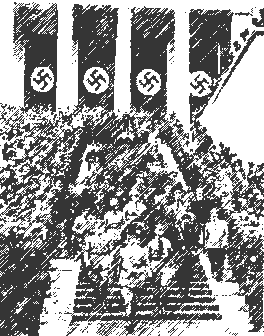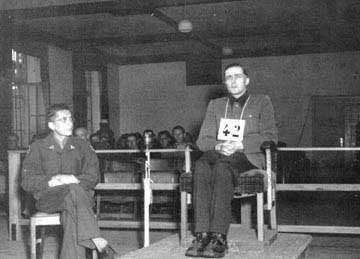Траугот Хер/Traugott Herr
(16.09.1890-13.04.1976)
General der Panzertruppe/Генерал от танковите войски
Име и ранг General der Panzertruppe Траугот Хер
Пленен в: Италия
Пленен на: 2 май 1945
Лични данни
Дата на раждане: 16 септември 1890
Място на раждане: Веферлинген
Дата на смъртта: 13 април 1976
Място на смъртта: Ахтервер /Шлезвиг-Холщайн
Националност: Германска
Професия: Войник
Повишения
Фаненюнкер: 18 април 1911
ФАненюнкер-Унтерофицер: 9 август 1911
Fähnrich: 19 декември 1911
Лейтенант: 18 август 1912
Оберелйтенант: 28 ноември 1917
Капитан: 1 януари 1926
Майор: 1 юни 1934
Подполковник: 1 октомври 1936
Полковник: 1 август 1939
Генерал-майор: 1 април 1942
Генерал-лейтенант: 15 февруари 1943
General der Panzertruppe: 1 септември 1943
Назначения:
18 април 1911: Постъпва в армията като Фаненюнкер в Стрелкови Полк "Prinz Heinrich von Preusen" (1. Brandenburgisches)
Октомври 1911-юли 1912: Прикрепен към Военното училище в Глогау
5 август 1914: На бойното поле с 35 стрелкови полк
10 октомври 1914: Адютант на II. Батальон на 35 Стрелкови Полк
12 декември 1914: Ранен
12 януари 1915: Връща се отново като адютант на II. батальон на 35 стрелкови полк
1 март 1916: Полкови адютант на 35 стрелкови полк
19 март 1916: Адютант на 35 стрелкови полк
31 август 1916: Ранен
20 октомври 1916: Разпределен в Резервен батальон от 35 стрелкови полк
1 декември 1916: Завършва курс за Командир на Картечна рота с 2ра Резервна Картечна рота от ²²² армейски корпус
15 януари 1917: Командир на 2ра картечна рота от 451 пехотен полк
6 ноември 1917: Офицер от щаба на 234 пехотна дивизия
14 февруари 1918: Връща се в 451 пехотен полк
24 февруари 1918: Офицер в щаба на 451 пехотен полк
1 март 1918: Командир на резервен батальон от 451 пехотен полк
29 юни 1918: Разболява се.
22 юли 1918: Връща се в 451 пехотен полк
14 декември 1918: Ротен командир в резервен батальон от 35 стрелкови полк
1 февруари 1919: Адютант на командването в Бранденбург
23 October 1919: Transferred to the 3rd Machinegun Company of Reichswehr Infantry Regiment 5 of Reichswehr-Brigade 3.
25 October 1920: Adjutant of the Fusilier Battalion of Reichswehr Infantry Regiment 5 of Reichswehr-Brigade 3.
1 November 1920: Leader of the Transitory Battalion of Reichswehr Infantry Regiment 5 of Reichswehr-Brigade 3.
1 January 1921: Transferred to the 4th Machinegun Company of the 9th (Prussian) Infantry Regiment upon the formation of the new Reichsheer from the Übergangsheer or Transitional Army.
19 June 1922-7 July 1922: At the same time, Deputy Company Leader in the 9th (Prussian) Infantry Regiment.
1 October 1923: Transferred to the 9th (Prussian) Reiter [Mounted]-Regiment, Fürstenwalde, and detached to Wehrkreis [Military District] Command III.
1 October 1924: Returned to the 9th (Prussian) Infantry Regiment.
29 September 1925-23 December 1925: Detached for driving technical training with the 3rd (Prussian) Motorized Battalion.
1 February 1926: Hauptmann on the Staff of the 9th (Prussian) Infantry Regiment.
21 April 1926-6 May 1926: Detached for training with the 3rd (Prussian) Motorized Battalion.
28 June 1926-23 July 1926: Detached for training with the 3rd (Prussian) Motorized Battalion.
1 February 1927: Chief of the 4th Machinegun Company of the 9th (Prussian) Infantry Regiment.
26 September 1927-15 October 1927: Detached to a heavy machinegun course at Döberitz.
1 October 1929-21 December 1929: Detached for driving training with the 3rd (Prussian) Motorized Battalion.
6 January 1931-13 February 1931: Detached to the Tactical-Technical Officers Course at the Motorized Training Command, Berlin.
1 July 1933: Tactics Instructor at the Infantry School; renamed the Dresden War School on 1 January 1935.
1 January 1937: Commander of the III. Battalion of Infantry Regiment 33 (Motorized), Zerbst.
26 August 1939: Commander of Infantry Replacement Regiment 13 (Motorized) of the 191st Division. [Based in Madgeburg, this training and replacement regiment provided basic training for new recruits.]
18 September 1939: Commander of Infantry Regiment 66 (Motorized) of the 13th Infantry Division (Motorized). [In September 1939, the division, commanded by Generalleutnant Moritz Faber du Faur (Generalleutnant Paul Otto from 7 September 1939), took part in the invasion of Poland during which it helped encircle and defeat seven Polish divisions in the Radom Pocket. Taking command on 1 November 1939, Generalmajor Friedrich-Wilhelm von Rothkirch und Panthen led the 13th Infantry Division (Motorized) during the invasion of France in May 1940. Subordinated to Panzer Group “Kleist,” the division followed in the wake of the rapidly advancing armored spearheads and established a defensive line on the Somme. During the second phase of the Battle of France, the division was attached to General der Kavallerie Erich Hoepner’s XVI Army Corps (Motorized) under Panzer Group “Kleist.” After crossing the Seine, Hoepner’s corps plunged deep into southern France reaching the area around Lyon in the Rhône Valley by the time the Franco-German ceasefire took effect on 25 July 1940.]
14 October 1940: Commander of the 13th Schützen-Brigade of the 13th Panzer Division. [Formed at Wien from the 13th Infantry Division (Motorized) on 11 October 1940, Generalmajor von Rothkirch und Panthen’s new 13th Panzer Division moved to Romania where it served as a training organization. On 22 June 1941, after moving to staging areas in Poland, the division participated in the invasion of the Soviet Union as a component of Generaloberst Ewald von Kleist’s Panzer Group 1 under Army Group South.[1] Commanded by Generalmajor Walther Düvert since 14 June 1941, the 13th Panzer Division saw heavy combat at Uman and Kiev during the drive through southern Russia. Taking part in the III Panzer Corps’ capture of Rostov on 21 November 1941, the division, along with the rest of the corps, abandoned the city a week later in the face of the Soviet counteroffensive.]
1 December 1941: Delegated with the leadership of the 13th Panzer Division on the Eastern Front. [After taking command from Generalmajor Düvert, Herr’s division remained under the 1st Panzer Army in defensive positions along the Mius River near Taganrog throughout the winter of 1941-1942.]
1 April 1942: Commander of the 13th Panzer Division on the Eastern Front. [The 1st Panzer Army, operating under Army Group A, took part in the German 1942 Summer Offensive. After participating in the recapture of Rostov in July 1942, the 13th Panzer Division crossed the Don River and then struck deep into the Caucasus. After seizing a bridgehead on the Terek River near Mozdok in September, Herr’s division took part in the unsuccessful bid to capture Ordzhonikidze later the next month.[2]]
31 October 1942: Severely wounded in the base of the skull by shrapnel at Urukh near Dzagipars during the advance on Ordzhonikidze/in hospital/Army High Command Leader Reserve. [Generalleutnant Helmut von der Chevallerie assumed command of the 13th Panzer Division upon the wounding of Generalmajor Herr.]
15 June 1943: Detached to Army Group D in France.
29 June 1943: Delegated with the leadership of the LXXVI Army Corps in Italy; redesignated the LXXVI Panzer Corps on 22 July 1943. [Assigned to General der Panzertruppe (later Generaloberst) Heinrich-Gottfried von Vietinghoff genannt Scheel’s newly activated 10th Army in August 1943, the LXXVI Panzer Corps was based in Calabria at the toe of Italy with the 26th Panzer and 29th Panzer Grenadier Divisions under its command.]
1 September 1943-28 February 1944: Commanding General of the LXXVI Panzer Corps in Italy (from 1 March 1944-15 April 1944, corps command delegated to Generalleutnant Dietrich von Choltitz). [On 3 September 1943, the Allies began the invasion of the Italian mainland when the British Eighth Army crossed the Straits of Messina and landed in Calabria (Operation Baytown). Ordered to conduct a delaying action and withdraw northwards, Herr’s corps slowly gave ground as the German High Command made plans to meet the main Allied landings, the location of which remained unclear. On 9 September 1943, British and American forces under the U.S. Fifth Army launched Operation Avalanche, the main amphibious landings at Salerno. The German 10th Army, including Herr’s corps, immediately contained the beachhead to buy time for all German forces to withdraw from southern Italy. Although the Germans nearly succeeded in forcing the Allies to evacuate the Salerno beachhead, von Vietinghoff began withdrawing his forces on the 16th of September. After a grudging rearguard action along the Volturno River, the German 10th Army reached the defensive positions of the Bernhard and Gustav Lines anchored on the Garigliano and Rapido Rivers by November 1943. Shifted from the Adriatic front and subordinated to Generaloberst Eberhard von Mackensen’s 14th Army in early February 1944, Herr’s corps helped contain the Allied beachhead at Anzio following the British and American amphibious landings on 22 January 1944 (Operation Shingle).]
16 April 1944-26 December 1944: Again, Commanding General of the LXXVI Panzer Corps in Italy (from 24 November 1944-13 December 1944, corps command delegated to Generalleutnant Friedrich-Wilhelm Hauck). [After cracking the Gustav Line at Cassino and breaking out of the Anzio bridgehead, the Allies captured Rome on 4 June 1944. The 14th Army (commanded by General der Panzertruppe Joachim Lemelsen since 2 June 1944), in conjunction with von Vietinghoff’s adjacent 10th Army, executed a difficult withdrawal through central Italy. By August 1944, both armies were ensconced in the Arno and Gothic Line defensive positions in the North Apennines.]
24 November 1944-16 December 1944: Delegated with the leadership of the 14th Army in Italy. [Herr assumed command of the army from General der Artillerie Heinz Ziegler who had been exercising temporary leadership for the past month. Within three weeks of taking over the 14th Army, Herr relinquished command to General der Infanterie Kurt von Tippelskirch for medical reasons, perhaps from complications of the head wound he sustained in Russia on 31 October 1942.[3]]
December 1944: Underwent a head operation/in hospital.
17 January 1945-15 February 1945: Convalescent leave/in Leader Reserve.
15 February 1945-2 May 1945: Delegated with the leadership of the 10th Army in Italy. [After succeeding General der Panzertruppe Joachim Lemelsen, Herr commanded the 10th Army for the remainder of the war.[4] In April 1945, the Allies launched their spring offensive in Italy. With the LXXVI Panzer Corps (General der Panzertruppe Gerhard Graf von Schwerin; Generalleutnant Karl von Graffen from 26 April 1945), the I Parachute Corps (General der Fallschirmtruppe Richard Heidrich) and the LXXIII Army Corps for Special Employment (General der Infanterie Anton Dostler) under his command, Herr’s army defended the line from Bologna to the Adriatic coast opposite the British Eighth Army commanded by Lieutenant-General Sir Richard L. McCreery. Piercing Herr’s front, British forces surged forward capturing Ferrara, Rovigo, Padova and Venice before swinging eastward to the Italo-Yugoslav frontier. With the Axis forces in Italy routed, representatives of Generaloberst von Vietinghoff genannt Scheel and SS-Obergruppenführer und General der Waffen-SS Karl Wolff signed the instrument of local surrender at Caserta on 29 April 1945.[5] At noon on 2 May 1945, all Axis forces under control of the Commander-in-Chief Southwest and Army Group C surrendered to the Allies thus ending the long and costly Italian campaign.[6]]
2 May 1945-17 May 1948: Prisoner of war in British captivity.
Награди и декорации:
Рицарски Кръст: 2 октомври 1941 докато е Полковник и Командир на , 13 Schützen-Brigade.
Дъбови Листа (No. 110): 9 август 1942 докато е Генерал-майор и командир на 13 танкова дивизия.
Мечове (No. 117): 18 декември 1944 като General der Panzertruppe, и командващ LXXVI танков корпус.
Пруски Кралски Орден на Хохенцолерните - Рицарски Кръст с Мечове: 24 ноември 1917.
Пруски Железен Кръст 1 степен (1914): 21 октомври 1915
Пруски Железен Кръст 2 степен (1914): 14 септември 1914
Лента от 1939 за Пруски Железен Кръст 1 степен (1914): 12 май 1940.
Лента от 1939 за Пруски Железен Кръст 2 степен (1914): 24 септември 21 септември 1939.
Медал за Зимната кампания в Русия 1941/1942 "Източен Медал": 3 август 1942.
Хамбургски Кръст на Ханзата
Почетен Кръст на бойците 1914-1918
Награда за Дълга Служба във Въоръжените Сили 1 степен (25 години)
Награда за Дълга Служба във Въоръжените Сили 3 степен (12 години)
Възпоменателен австрийски военен медал с мечове
Възпоменателен медал от 1 октомври 1938
Сребърна танкистка значка
Значка за раняване в черно от Първата Световна война
Сребърна значка за раняване от Втората Световна война


След пленяването

(16.09.1890-13.04.1976)
General der Panzertruppe/Генерал от танковите войски
Име и ранг General der Panzertruppe Траугот Хер
Пленен в: Италия
Пленен на: 2 май 1945
Лични данни
Дата на раждане: 16 септември 1890
Място на раждане: Веферлинген
Дата на смъртта: 13 април 1976
Място на смъртта: Ахтервер /Шлезвиг-Холщайн
Националност: Германска
Професия: Войник
Повишения
Фаненюнкер: 18 април 1911
ФАненюнкер-Унтерофицер: 9 август 1911
Fähnrich: 19 декември 1911
Лейтенант: 18 август 1912
Оберелйтенант: 28 ноември 1917
Капитан: 1 януари 1926
Майор: 1 юни 1934
Подполковник: 1 октомври 1936
Полковник: 1 август 1939
Генерал-майор: 1 април 1942
Генерал-лейтенант: 15 февруари 1943
General der Panzertruppe: 1 септември 1943
Назначения:
18 април 1911: Постъпва в армията като Фаненюнкер в Стрелкови Полк "Prinz Heinrich von Preusen" (1. Brandenburgisches)
Октомври 1911-юли 1912: Прикрепен към Военното училище в Глогау
5 август 1914: На бойното поле с 35 стрелкови полк
10 октомври 1914: Адютант на II. Батальон на 35 Стрелкови Полк
12 декември 1914: Ранен
12 януари 1915: Връща се отново като адютант на II. батальон на 35 стрелкови полк
1 март 1916: Полкови адютант на 35 стрелкови полк
19 март 1916: Адютант на 35 стрелкови полк
31 август 1916: Ранен
20 октомври 1916: Разпределен в Резервен батальон от 35 стрелкови полк
1 декември 1916: Завършва курс за Командир на Картечна рота с 2ра Резервна Картечна рота от ²²² армейски корпус
15 януари 1917: Командир на 2ра картечна рота от 451 пехотен полк
6 ноември 1917: Офицер от щаба на 234 пехотна дивизия
14 февруари 1918: Връща се в 451 пехотен полк
24 февруари 1918: Офицер в щаба на 451 пехотен полк
1 март 1918: Командир на резервен батальон от 451 пехотен полк
29 юни 1918: Разболява се.
22 юли 1918: Връща се в 451 пехотен полк
14 декември 1918: Ротен командир в резервен батальон от 35 стрелкови полк
1 февруари 1919: Адютант на командването в Бранденбург
23 October 1919: Transferred to the 3rd Machinegun Company of Reichswehr Infantry Regiment 5 of Reichswehr-Brigade 3.
25 October 1920: Adjutant of the Fusilier Battalion of Reichswehr Infantry Regiment 5 of Reichswehr-Brigade 3.
1 November 1920: Leader of the Transitory Battalion of Reichswehr Infantry Regiment 5 of Reichswehr-Brigade 3.
1 January 1921: Transferred to the 4th Machinegun Company of the 9th (Prussian) Infantry Regiment upon the formation of the new Reichsheer from the Übergangsheer or Transitional Army.
19 June 1922-7 July 1922: At the same time, Deputy Company Leader in the 9th (Prussian) Infantry Regiment.
1 October 1923: Transferred to the 9th (Prussian) Reiter [Mounted]-Regiment, Fürstenwalde, and detached to Wehrkreis [Military District] Command III.
1 October 1924: Returned to the 9th (Prussian) Infantry Regiment.
29 September 1925-23 December 1925: Detached for driving technical training with the 3rd (Prussian) Motorized Battalion.
1 February 1926: Hauptmann on the Staff of the 9th (Prussian) Infantry Regiment.
21 April 1926-6 May 1926: Detached for training with the 3rd (Prussian) Motorized Battalion.
28 June 1926-23 July 1926: Detached for training with the 3rd (Prussian) Motorized Battalion.
1 February 1927: Chief of the 4th Machinegun Company of the 9th (Prussian) Infantry Regiment.
26 September 1927-15 October 1927: Detached to a heavy machinegun course at Döberitz.
1 October 1929-21 December 1929: Detached for driving training with the 3rd (Prussian) Motorized Battalion.
6 January 1931-13 February 1931: Detached to the Tactical-Technical Officers Course at the Motorized Training Command, Berlin.
1 July 1933: Tactics Instructor at the Infantry School; renamed the Dresden War School on 1 January 1935.
1 January 1937: Commander of the III. Battalion of Infantry Regiment 33 (Motorized), Zerbst.
26 August 1939: Commander of Infantry Replacement Regiment 13 (Motorized) of the 191st Division. [Based in Madgeburg, this training and replacement regiment provided basic training for new recruits.]
18 September 1939: Commander of Infantry Regiment 66 (Motorized) of the 13th Infantry Division (Motorized). [In September 1939, the division, commanded by Generalleutnant Moritz Faber du Faur (Generalleutnant Paul Otto from 7 September 1939), took part in the invasion of Poland during which it helped encircle and defeat seven Polish divisions in the Radom Pocket. Taking command on 1 November 1939, Generalmajor Friedrich-Wilhelm von Rothkirch und Panthen led the 13th Infantry Division (Motorized) during the invasion of France in May 1940. Subordinated to Panzer Group “Kleist,” the division followed in the wake of the rapidly advancing armored spearheads and established a defensive line on the Somme. During the second phase of the Battle of France, the division was attached to General der Kavallerie Erich Hoepner’s XVI Army Corps (Motorized) under Panzer Group “Kleist.” After crossing the Seine, Hoepner’s corps plunged deep into southern France reaching the area around Lyon in the Rhône Valley by the time the Franco-German ceasefire took effect on 25 July 1940.]
14 October 1940: Commander of the 13th Schützen-Brigade of the 13th Panzer Division. [Formed at Wien from the 13th Infantry Division (Motorized) on 11 October 1940, Generalmajor von Rothkirch und Panthen’s new 13th Panzer Division moved to Romania where it served as a training organization. On 22 June 1941, after moving to staging areas in Poland, the division participated in the invasion of the Soviet Union as a component of Generaloberst Ewald von Kleist’s Panzer Group 1 under Army Group South.[1] Commanded by Generalmajor Walther Düvert since 14 June 1941, the 13th Panzer Division saw heavy combat at Uman and Kiev during the drive through southern Russia. Taking part in the III Panzer Corps’ capture of Rostov on 21 November 1941, the division, along with the rest of the corps, abandoned the city a week later in the face of the Soviet counteroffensive.]
1 December 1941: Delegated with the leadership of the 13th Panzer Division on the Eastern Front. [After taking command from Generalmajor Düvert, Herr’s division remained under the 1st Panzer Army in defensive positions along the Mius River near Taganrog throughout the winter of 1941-1942.]
1 April 1942: Commander of the 13th Panzer Division on the Eastern Front. [The 1st Panzer Army, operating under Army Group A, took part in the German 1942 Summer Offensive. After participating in the recapture of Rostov in July 1942, the 13th Panzer Division crossed the Don River and then struck deep into the Caucasus. After seizing a bridgehead on the Terek River near Mozdok in September, Herr’s division took part in the unsuccessful bid to capture Ordzhonikidze later the next month.[2]]
31 October 1942: Severely wounded in the base of the skull by shrapnel at Urukh near Dzagipars during the advance on Ordzhonikidze/in hospital/Army High Command Leader Reserve. [Generalleutnant Helmut von der Chevallerie assumed command of the 13th Panzer Division upon the wounding of Generalmajor Herr.]
15 June 1943: Detached to Army Group D in France.
29 June 1943: Delegated with the leadership of the LXXVI Army Corps in Italy; redesignated the LXXVI Panzer Corps on 22 July 1943. [Assigned to General der Panzertruppe (later Generaloberst) Heinrich-Gottfried von Vietinghoff genannt Scheel’s newly activated 10th Army in August 1943, the LXXVI Panzer Corps was based in Calabria at the toe of Italy with the 26th Panzer and 29th Panzer Grenadier Divisions under its command.]
1 September 1943-28 February 1944: Commanding General of the LXXVI Panzer Corps in Italy (from 1 March 1944-15 April 1944, corps command delegated to Generalleutnant Dietrich von Choltitz). [On 3 September 1943, the Allies began the invasion of the Italian mainland when the British Eighth Army crossed the Straits of Messina and landed in Calabria (Operation Baytown). Ordered to conduct a delaying action and withdraw northwards, Herr’s corps slowly gave ground as the German High Command made plans to meet the main Allied landings, the location of which remained unclear. On 9 September 1943, British and American forces under the U.S. Fifth Army launched Operation Avalanche, the main amphibious landings at Salerno. The German 10th Army, including Herr’s corps, immediately contained the beachhead to buy time for all German forces to withdraw from southern Italy. Although the Germans nearly succeeded in forcing the Allies to evacuate the Salerno beachhead, von Vietinghoff began withdrawing his forces on the 16th of September. After a grudging rearguard action along the Volturno River, the German 10th Army reached the defensive positions of the Bernhard and Gustav Lines anchored on the Garigliano and Rapido Rivers by November 1943. Shifted from the Adriatic front and subordinated to Generaloberst Eberhard von Mackensen’s 14th Army in early February 1944, Herr’s corps helped contain the Allied beachhead at Anzio following the British and American amphibious landings on 22 January 1944 (Operation Shingle).]
16 April 1944-26 December 1944: Again, Commanding General of the LXXVI Panzer Corps in Italy (from 24 November 1944-13 December 1944, corps command delegated to Generalleutnant Friedrich-Wilhelm Hauck). [After cracking the Gustav Line at Cassino and breaking out of the Anzio bridgehead, the Allies captured Rome on 4 June 1944. The 14th Army (commanded by General der Panzertruppe Joachim Lemelsen since 2 June 1944), in conjunction with von Vietinghoff’s adjacent 10th Army, executed a difficult withdrawal through central Italy. By August 1944, both armies were ensconced in the Arno and Gothic Line defensive positions in the North Apennines.]
24 November 1944-16 December 1944: Delegated with the leadership of the 14th Army in Italy. [Herr assumed command of the army from General der Artillerie Heinz Ziegler who had been exercising temporary leadership for the past month. Within three weeks of taking over the 14th Army, Herr relinquished command to General der Infanterie Kurt von Tippelskirch for medical reasons, perhaps from complications of the head wound he sustained in Russia on 31 October 1942.[3]]
December 1944: Underwent a head operation/in hospital.
17 January 1945-15 February 1945: Convalescent leave/in Leader Reserve.
15 February 1945-2 May 1945: Delegated with the leadership of the 10th Army in Italy. [After succeeding General der Panzertruppe Joachim Lemelsen, Herr commanded the 10th Army for the remainder of the war.[4] In April 1945, the Allies launched their spring offensive in Italy. With the LXXVI Panzer Corps (General der Panzertruppe Gerhard Graf von Schwerin; Generalleutnant Karl von Graffen from 26 April 1945), the I Parachute Corps (General der Fallschirmtruppe Richard Heidrich) and the LXXIII Army Corps for Special Employment (General der Infanterie Anton Dostler) under his command, Herr’s army defended the line from Bologna to the Adriatic coast opposite the British Eighth Army commanded by Lieutenant-General Sir Richard L. McCreery. Piercing Herr’s front, British forces surged forward capturing Ferrara, Rovigo, Padova and Venice before swinging eastward to the Italo-Yugoslav frontier. With the Axis forces in Italy routed, representatives of Generaloberst von Vietinghoff genannt Scheel and SS-Obergruppenführer und General der Waffen-SS Karl Wolff signed the instrument of local surrender at Caserta on 29 April 1945.[5] At noon on 2 May 1945, all Axis forces under control of the Commander-in-Chief Southwest and Army Group C surrendered to the Allies thus ending the long and costly Italian campaign.[6]]
2 May 1945-17 May 1948: Prisoner of war in British captivity.
Награди и декорации:
Рицарски Кръст: 2 октомври 1941 докато е Полковник и Командир на , 13 Schützen-Brigade.
Дъбови Листа (No. 110): 9 август 1942 докато е Генерал-майор и командир на 13 танкова дивизия.
Мечове (No. 117): 18 декември 1944 като General der Panzertruppe, и командващ LXXVI танков корпус.
Пруски Кралски Орден на Хохенцолерните - Рицарски Кръст с Мечове: 24 ноември 1917.
Пруски Железен Кръст 1 степен (1914): 21 октомври 1915
Пруски Железен Кръст 2 степен (1914): 14 септември 1914
Лента от 1939 за Пруски Железен Кръст 1 степен (1914): 12 май 1940.
Лента от 1939 за Пруски Железен Кръст 2 степен (1914): 24 септември 21 септември 1939.
Медал за Зимната кампания в Русия 1941/1942 "Източен Медал": 3 август 1942.
Хамбургски Кръст на Ханзата
Почетен Кръст на бойците 1914-1918
Награда за Дълга Служба във Въоръжените Сили 1 степен (25 години)
Награда за Дълга Служба във Въоръжените Сили 3 степен (12 години)
Възпоменателен австрийски военен медал с мечове
Възпоменателен медал от 1 октомври 1938
Сребърна танкистка значка
Значка за раняване в черно от Първата Световна война
Сребърна значка за раняване от Втората Световна война


След пленяването










































































Comment